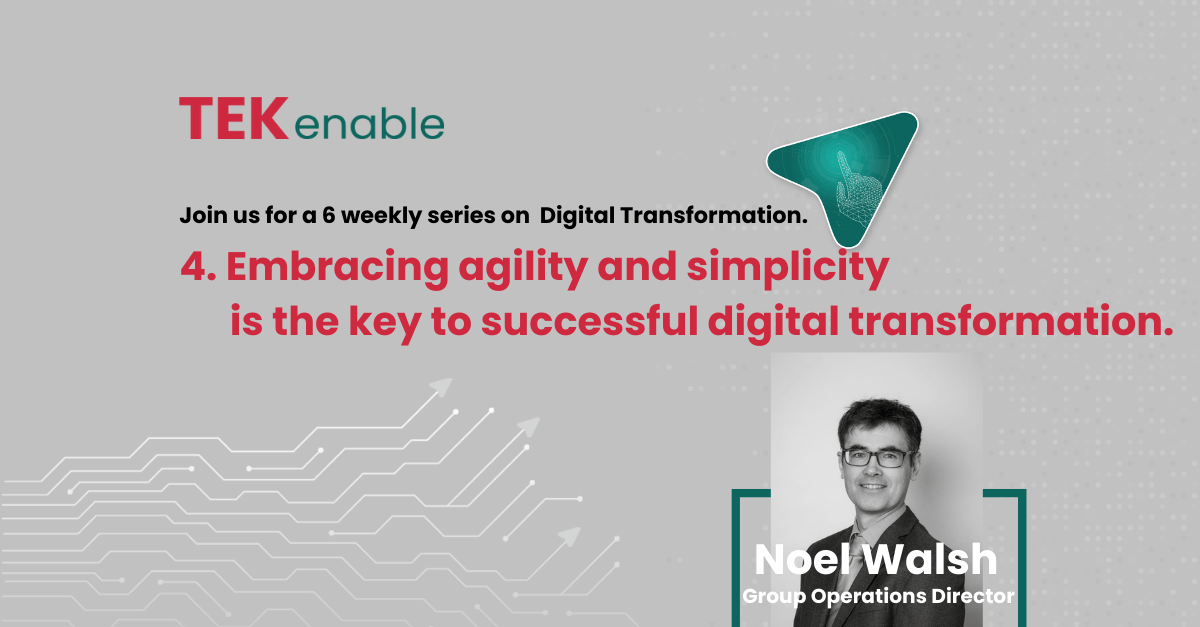Digital transformation journeys can build for Success with the KISS (Keep It Simple, Stupid) principle.
Technology is complex. Despite the Herculean efforts businesses make to ensure customers have a smooth user experience, the reality is that the core technologies deployed today are inherently complicated. No one who has ever committed a line of code needs to be told this, of course, while, in addition, though we rarely think of it, the experience of the cloud obscures extremely complex networking infrastructure.
As a result, embarking on a digital transformation journey, which is necessary for organisations that don’t want to see their market share lost to competitors, can be a daunting prospect.
Worse still, add in the desire to build solutions that respond to exceptional or edge cases and it can easily become overwhelming. It needn’t be so, though.
The simpler, the better
True success in digital transformation comes from an agile mindset that embraces simplicity throughout the entire journey. One way to do this is to keep in mind the famous KISS or Keep It Simple, Stupid design principle. KISS was first used by the US Navy in the 1960s, faced with increasingly complex equipment designs and is intended to help organisations overcome complexity, something that every business today could benefit from.
As I noted in a previous blog post, an important step towards digital transformation success is adopting an agile mindset. Agile methodologies, such as Scrum or Kanban, which promote iterative development, collaboration, and quick decision-making, allow organisations to break free from rigid and slow linear processes and instead focus on delivering value in smaller, incremental steps.
In practical terms, this allows them to respond rapidly to changing market demands and customer preferences by integrating frequent feedback loops into the process, which in turn provide valuable insights for continuous improvement and, if necessary, course correction. By being adaptable and open to change, businesses can then better navigate the complexities of the digital transformation process and develop, maintain and grow a competitive edge.
The KISS Principle
But let’s get even simpler. Underlying a shift to agile should be a focus on simplicity.
While complexity can be tempting (everyone wants everything right now, after all), simplicity really should be the guiding principle throughout the digital transformation journey. This is where the KISS principle comes in, encouraging organisations to avoid over-complicating solutions and processes.
In short, simplifying, streamlining and removing unnecessary complexities will enhance efficiency and reduce costs, as well as improve user experiences. And that is the real ‘why’ of digital transformation.
Remember, complexity is fractal: the more you zoom in on it, the more you will see. As a result, building solutions based on exceptional or edge cases, which can be tempting, is likely to lead to a web of intricate systems that are difficult to maintain and scale – not to mention risking loss of expertise resulting in systems going un-maintained.
Instead, organisations should focus on the core user requirements and technical functionalities that address the majority of user needs. By prioritising simplicity, they can develop lean and efficient solutions that are easier to manage and adapt to changing requirements. And the edge cases? They can still be dealt with, on a case-by-case basis, in the time freed up by the smooth transition to automation or self-service.
Flexibility and Adaptability
If there is one thing that digital transformation should deliver, it is the ability to be nimble. By moving away from monolithic systems and processes, organisations can become more nimble in responding both to users and to market evolution. And they need to: in today’s digital landscape, change is the only constant. As a result, organisations must be prepared to adapt quickly.
Here, simplicity helps: by designing flexible and adaptable solutions, businesses can future-proof their digital transformation efforts. A modular and scalable architecture, with each component focussed on a single task or even sub-task, allows organisations to add or remove components as needed, accommodating new features and functionalities without disrupting the entire system. Furthermore, by leveraging application programming interfaces (APIs) and microservices, not to mention deploying in the cloud, organisations can integrate and interconnect systems more efficiently,a gain promoting flexibility and agility.
The payoff should be rapid. Firstly, simple developments or changes to processes can be deployed quickly and adjusted in response to feedback or user interaction data. Compare this to a monolithic project that may take eighteen months or longer to deploy, and the benefits are clear. Secondly, as feedback is baked into the process and simpler component parts are easier to iterate, you can keep a focus on the customer, understanding their needs and creating solutions that truly meet their expectations.
Thirdly, as we have known at least since the days of Xerox Parc and the introduction of the Apple Macintosh in 1984, simplicity plays a crucial role in delivering exceptional user experiences. Whether in terms of pure user-interface design or in developing the right processes, removing unnecessary complexities and providing intuitive experiences will see businesses enhance user satisfaction – and drive higher adoption rates.
As a result, adopting the KISS principle reminds organisations to prioritise user-friendliness and ease of use, ensuring that digital solutions are accessible to the broadest possible audience.
Simpler means more
There’s more. Or at least, there should be. Complexity can hinder innovation and slow down the pace of digital transformation. However, by embracing simplicity and agility, organisations can foster a culture of experimentation and continuous improvement, which leads to the delivery of not only better solutions to the end-user but also, paradoxically, more of them.
In other words, while simplifying processes and solutions allows teams to iterate more rapidly, it also allows them to add new features with ease. Shorter development cycles mean feedback is gathered sooner, adjustments can be made on-the-fly, and you can get to market faster. Clearly, then, an iterative approach not only accelerates innovation but also enables organisations to get – and stay – ahead of the competition to meet ever-changing customer demands. Keeping it simple doesn’t mean making it stupid, then.





